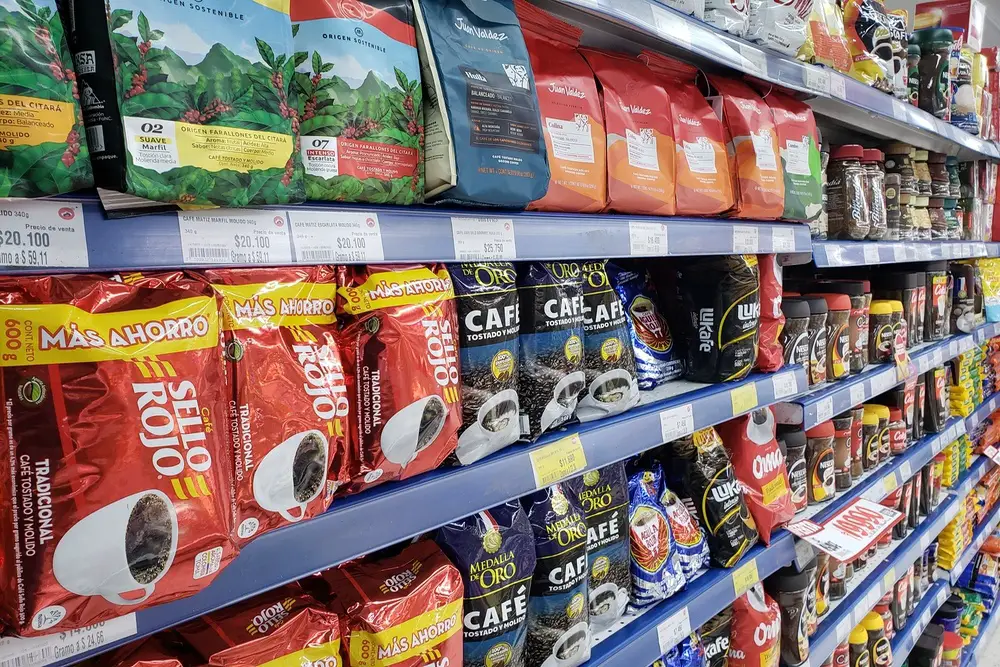Green coffee beans are coffee that has not yet been roasted. Once selected, this can go straight into our pantry without the need to heat it in any way. In the last decade it has gained popularity as a dietary supplement and weight loss aid, but it is also controversial.
One thing to be aware of is the side effects of over-consumption.
Table of Contents
Why is green coffee used for weight loss?
The consumption of green coffee is a tradition that dates back to the 7th and 8th centuries, the historical period known as the Golden Age of Islam. This is in Africa, near the origins of Robusta and Arabica, where green coffee was boiled, smoked or chewed.
This infusion made its way to Yemen in the 15th century, where it was drunk to take advantage of its stimulating properties.
Green coffee became very popular when, in 2012, doctor and TV personality Mehmet Cengiz Öz, known as Dr. Oz, proclaimed that this drink promotes very effective weight loss.
Since then there has been a debate in the scientific community with studies supporting both positions.
In fact, several studies on mice have shown that green coffee consumption leads to a reduction in body weight and fat formation. The effects on humans are explored in small groups over a short period of time and yield similar results.
These coffee beans contain more chlorogenic acid than roast coffee, which has a number of health benefits. Some studies even go so far as to suggest that this ingredient may be helpful in weight loss due to its combination with caffeine.
There are two main reasons that can lead to this conclusion:
- The chlorogenic acid helps improve metabolism and break down fatty acids by converting them into energy. In addition, it can distribute the fat in the body better.
- It creates a feeling of satiety, which reduces the need for sugary foods.
Since the green coffee beans are not roasted, this component (chlorogenic acid) retains its high concentration and is therefore better utilized.
So, drinking green coffee regularly might help you shed a few pounds, but pay attention to the following points.
Side effects of excessive consumption of green coffee
The same contraindications apply to green coffee as to roasted coffee as far as excess caffeine is concerned. It is therefore not recommended for the following groups of people:
Patients with diabetes
Although some studies suggest that green coffee’s properties may help regulate blood sugar levels, taking medications or insulin should be reconsidered, as coffee could amplify these effects in the body and extremely decrease sugar levels.
People with heart disease
Too much caffeine can lead to an increased heart rate and rapid heartbeat.
People with psychiatric disorders
Other negative effects that can be triggered by too much caffeine are restlessness and nervousness.
Pregnant or lactating women
There are no comprehensive studies on coffee consumption in pregnant women, but it can transform the baby. It is advisable not to drink it.
People with gastrointestinal problems
It can irritate the mucous membranes of the digestive tract.
People with kidney disease
The kidneys have the function of drainage, excess caffeine can increase the load on these organs. This is due to increased blood pressure, which means the kidneys have to filter more blood in less time.
It can damage bones
Regular caffeine consumption can also affect bones. A study on mice that drank caffeine for two months showed a sharp drop in calcium levels in these animals.
Problems due to too much chlorogenic acid
For its part, drinking a lot of green coffee has only one contraindication, which is caused by an excess of chlorogenic acid.
This can lead to high homocysteine levels . Homocysteine is an endogenous amino acid that builds up in the arteries in excess and can increase the risk of blood clots, heart attacks and strokes.
A high homocysteine level is also known as hyperhomocysteinemia and can also indicate a lack of vitamin B-12 or folate .
To determine whether the level of homocysteine in the blood is normal, a medical test is performed, which is divided into three categories: moderate, moderate and severe. This condition usually has no overt symptoms in adults, but very subtle ones in children.
Symptoms include fatigue, dizziness, muscle weakness, mental confusion, and stunted growth.
Do not combine green coffee with these drugs
Watch out! Before taking green coffee, you should also consider any other medications you are taking.
There are no drugs that react strongly or abruptly with green coffee. However, the following drugs react moderately and mainly with caffeine.
- Adenosine and Dipyridamole: They are used for cardiac stress testing. Caffeine blocks their effects, so it is recommended not to drink coffee 24 hours before the test.
- Alcohol, Disulfiram, Estrogens, Fluvoxamine, and Verapamil: All five slow the rate at which the body processes and excretes caffeine, so this combination may increase the negative effects of excess caffeine mentioned above.
- Alendronate: used to treat osteoporosis. Green coffee decreases the amount of alendronate that is absorbed by the body. That is why it is recommended to drink green coffee no earlier than two hours after taking the drug.
- Clozapine and Riluzole: Clozapine is used to treat patients with schizophrenia while riluzole is used to treat amyotrophic lateral sclerosis (ALS). Caffeine can slow the rate at which the body breaks down these drugs and increase their side effects, such as drowsiness, restlessness, and dizziness.
- Ephedrine, phenylpropanolamine, asthma and depression medications: These are stimulants that, when interacting with caffeine, can lead to heart problems due to overstimulation.
- Blood thinners: Consuming green coffee along with medications that also slow blood clotting could increase the risk of bruising and bleeding.
- Nicotine: Taking caffeine and nicotine together can increase heart rate and blood pressure.
- Pentobarbital: is a sedative used to induce sleep. Caffeine can block these effects.
To a lesser extent, other drugs may also react with caffeine:
- Antibiotics, birth control pills, cimetidine, fluconazole, mexiletine, and terbinafine: These agents can slow the rate at which the body breaks down caffeine and cause the side effects mentioned above.
- Antidiabetic and antihypertensive drugs: In this case, the relationship is reversed, i.e. the effects of caffeine are not increased, but caffeine reduces the effects of the drugs, making them ineffective.
So how much green coffee can you drink?
Green coffee is available on the market – physical or virtual – in four forms: as beans, ground, in capsules and liquid.
When we buy the beans, we should grind them at home, and it is recommended to drink 2 cups a day.
As for the capsules, the caffeine content varies depending on the manufacturer or the packaging. As there is no rule that standardizes this production is it is normal that each brand has its own recommendations.
In general, however, it is recommended to consume two of these products per day, bearing in mind that each product corresponds to 400 mg of coffee extract with a concentration of 50% chlorogenic acid. It is recommended to take these 30 minutes before each meal and no more than four a day.
For the liquid form, the recommended daily dose is 20 ml divided into two doses.
Conclusion
The huge popularity of green coffee for its health benefits can easily tempt people to abuse its consumption in order to achieve faster or better results.
Be aware of the various negative effects of drinking too much green coffee and don’t forget to consult your doctor or nutritionist before making any drastic dietary changes.



